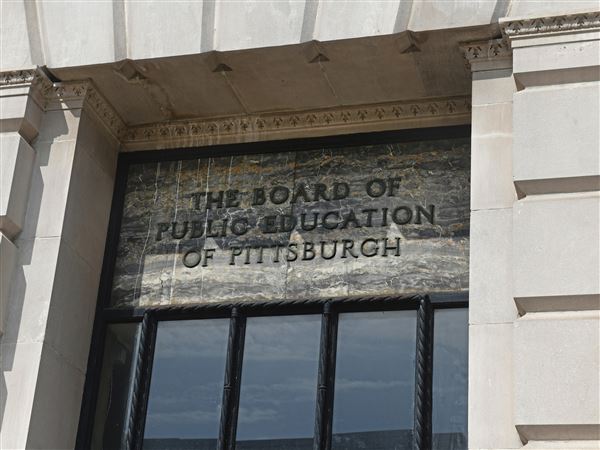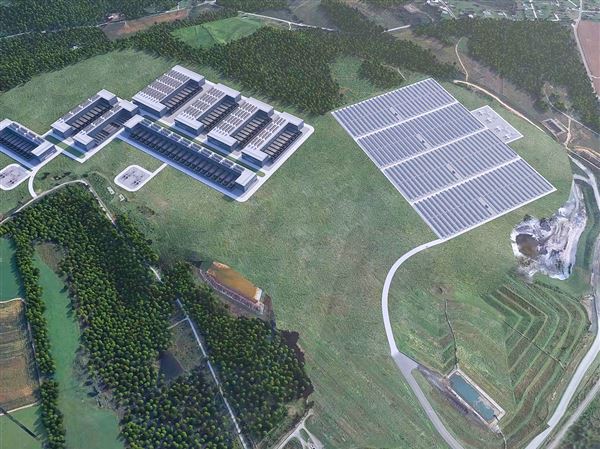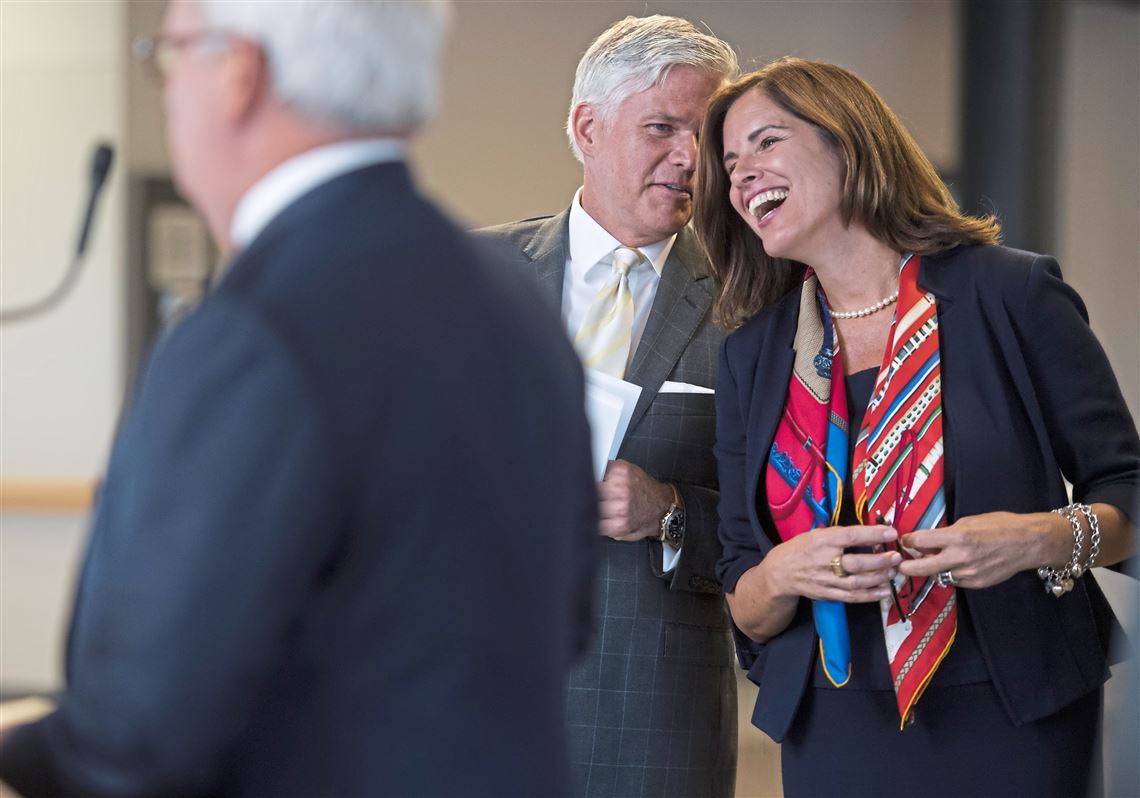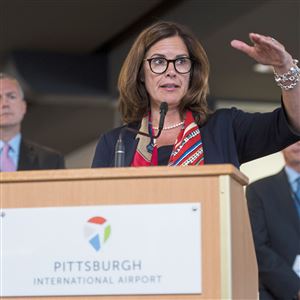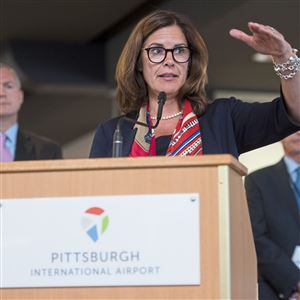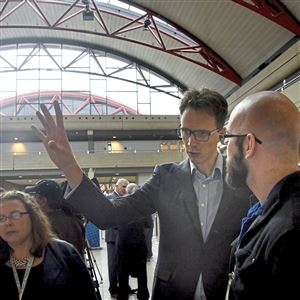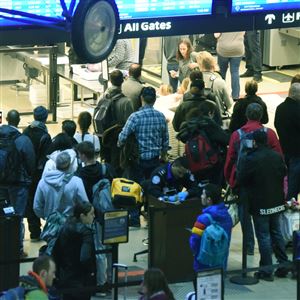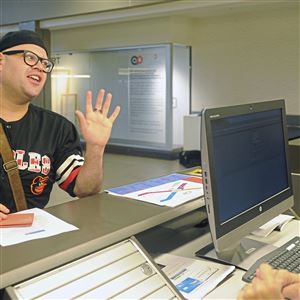Twenty-five years after the midfield terminal opened, Pittsburgh International Airport is primed for a $1.1 billion transformation, one that includes a new building for ticketing and security, a new parking garage and a streamlined boarding facility.
The plan unveiled Tuesday amounts to the ultimate makeover for a terminal opened as a US Airways hub in 1992 but one that now serves less than half the traffic and has more gates than it needs.
Under the proposed modernization, the current landside building would be abandoned, the tram that hauls people from it to the X-shaped boarding facility, or airside, terminated, and the number of gates reduced to 51 from 75.
Constructed in their place would be a $783.8 million landside building tucked between airside’s C and D concourses with new security and baggage facilities, a reconfigured international arrivals area, a 3,000-space parking garage, and a host of other amenities designed to meet the needs of 21st-century travelers.
VIDEO: Watch a video showing the modernization plan:
While midfield was built as a hub capable of handling 32 million travelers a year, the new complex would be able to accommodate more than 18 million and could be expanded to serve as many as 25 million. It now serves about 8.3 million passengers a year.
“The people of Pittsburgh finally get an airport built for them and not US Air,” said David Minnotte, board chairman of the Allegheny County Airport Authority, which operates Pittsburgh International.
Included in the $1.1 billion pricetag is $258.8 million for the parking garage and $57.1 million for roads needed once the tram and the current landside building are closed.
The authority said no local tax dollars would be used to finance the improvements. It also maintained that it would be able to pay for the massive undertaking without increasing landing fees or other charges to the airlines that fly from the airport.
In fact, Christina Cassotis, the authority’s CEO, said the airport’s cost per enplaned passenger, an industry benchmark, would actually fall from an average of $12.69 to $9.73 (in today’s dollars) in 2023, when the new landside building and other improvements are scheduled to be completed.
That would be made possible in part by $23 million a year the authority estimates it would save by closing landside and the tram and not having to maintain elevators, escalators and people movers, all of which are nearing the end of their useful lives, Ms. Cassotis said.
The timing is good as well since nearly all of the bonds used to finance the midfield terminal will be paid off next year.

This is an artist's rendering of the atrium as seen from the security checkpoint area inside the new landside terminal at Pittsburgh International Airport. (Allegheny County Airport Authority)
Authority officials plan to finance the new construction, which it hopes to start in 2019, through 20- to 30-year bonds, grants, passenger facility charges, and revenue from natural gas drilling on airport property.
Still up in the air is what would happen to the existing landside building, which houses ticket counters, the security checkpoint, and baggage claim. The authority has budgeted $20.3 million for its demolition, but Ms. Cassotis said it also could be marketed to developers.
“It will depend on what makes sense, who’s interested and what the market will bear,” she said.
While the number of gates would be cut to 51 under the plan, Ms. Cassotis said that’s about a dozen more than the airport currently uses. And the number, she stressed, could be expanded if demand dictates it under the “big box, loose fit” approach the authority is taking.
“We think we’re good for the next 20 years even with aggressive growth,” she said.
Ms. Cassotis added the authority, whose board approved the plan Tuesday, considered other approaches, including renovations to the existing facilities and relocating the boarding terminal, but all proved to be more costly than replacing landside.
“We’re paying for a facility that is too expensive to maintain with technology and space configurations that were designed for a different time in aviation,” she said.
With the new landside and other improvements, all ticketing, security, and baggage would be located on one level. Rental car operations would move to the new parking garage.
The changes should improve transit and bag delivery times and provide more space for security, Ms. Cassotis said. They also would result in another 24,000 square feet of concession space, mostly in the new landside building.
“What I love about this, it just doesn’t take care of today. It is forward thinking. It’s global. It’s young, it’s old, it’s everywhere. The thing is really conceptually one of the great plans that looks well into the future, well beyond all of us to the next generation,” said Sy Holzer, PNC special adviser to the chairman who attended the news conference Tuesday at which the airport proposal was unveiled.
Ms. Cassotis said the authority has been working with the airlines on the proposal for the past 30 months. It plans to hold a series of community meetings to discuss the changes. The Federal Aviation Administration also must sign off on the plan.
Officials with Southwest and American airlines, the airport’s two top carriers, responded favorably to the proposal.
“We have a lot of work ahead of us but we like the direction and what it looks like at this point,” said Mike Gillock, airport affairs property manager for Southwest.
Patrick Bowes, manager of corporate real estate for American Airlines, which includes the former US Airways, said the savings generated by the modernization come close to covering the new debt service needed to finance the improvements.
But he added there are still a lot of issues to decide — what ticketing space is needed, what international arrivals will look like, what technology to put in. Final costs still must be determined.
“We feel very confident that we’ll get there,” Mr. Bowes said. “With this team, we’re very confident that we will be exactly where we need to be.”
Michael Boyd, a Colorado-based aviation consultant who has been critical of some of the airport’s moves in the past, said the proposed modernization “makes a lot of sense.”
“The design in 1992 was for a massive hub for US Airways. US Airways is gone. You redesign the airport for what the future will be,” he said.
“It’s a plan for the future. That’s what airports have to do — plan for the future, not re-create the past. There’s still plenty of room for other carriers to come into town.”
Craig Davis, VisitPittsburgh CEO, said a sleek new landside building with the latest in technology and amenities and a right-sized boarding facility sure would beat the nearly empty terminal many visitors arrive to today.
“Pittsburgh makes such a wonderful impression, and this airport is not in keeping with that impression,” he said.
Mark Belko: mbelko@post-gazette.com or 412-263-1262.
First Published: September 12, 2017, 3:37 p.m.
Updated: September 12, 2017, 5:51 p.m.
